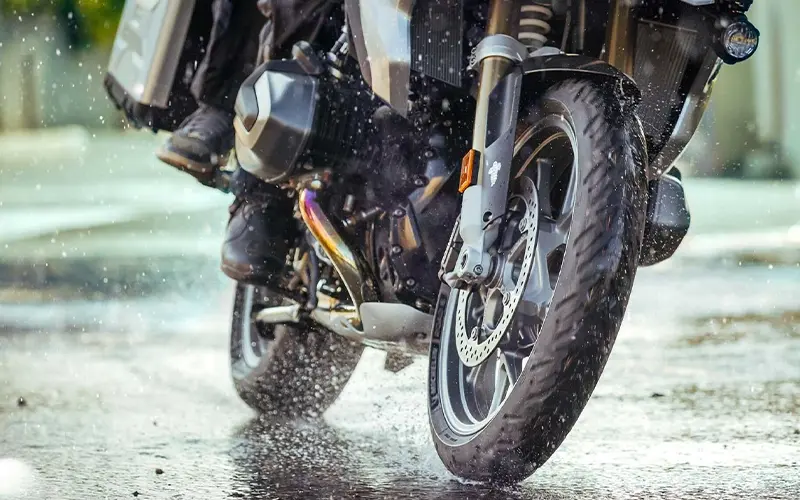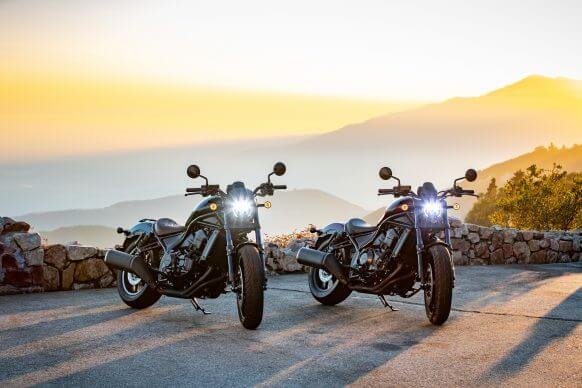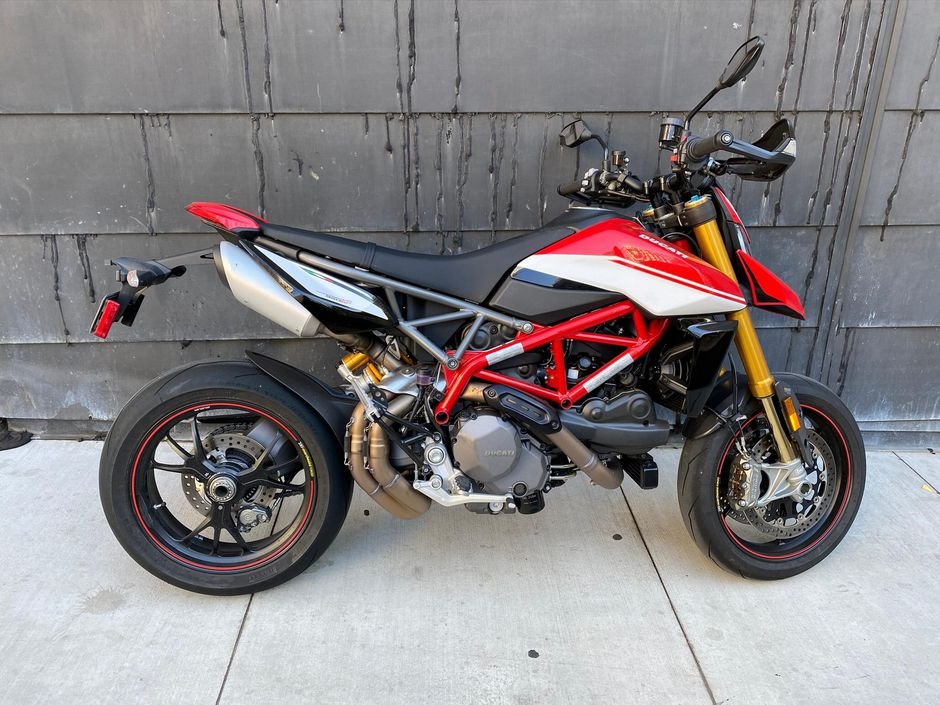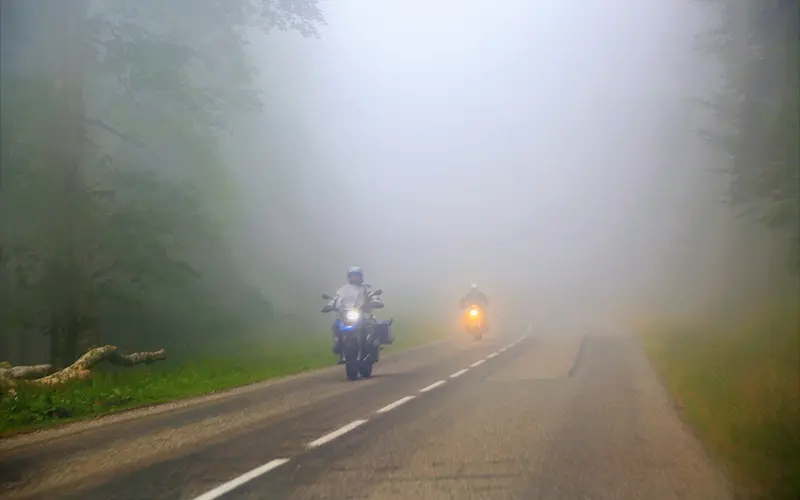Riding a motorcycle is an experience like no other. The freedom of the open road, the adrenaline rush as you lean into a curve, and the raw connection between man and machine—nothing quite compares. But when the roads are wet, that thrill can turn into a nerve-wracking challenge.
The truth is, motorcycles and wet roads don’t always mix well. Unlike cars, motorcycles rely on just two wheels for stability, making them much more vulnerable to losing traction. One wrong move—an abrupt stop, a sharp turn, or an unseen puddle—and you could find yourself in a dangerous slide.
If you’ve ever felt your rear tire slipping out from under you or struggled to brake in the rain, you know exactly how unsettling it can be. But wet weather doesn’t have to mean disaster. With the right preparation, riding techniques, and understanding of road conditions, you can greatly reduce the risk of skidding and ride safely in the rain.
So, let’s dive into what really causes skidding on wet roads, how to prevent it, and what to do if you start to lose control.
Why Do Motorcycles Skid on Wet Roads?
Skidding happens when your tires lose grip on the road. Normally, a motorcycle’s traction comes from the friction between its tires and the asphalt. But when the road is wet, that friction is reduced, making it much easier to slip.
One of the biggest culprits is water mixed with oil and dirt. During dry weather, vehicles leave behind residue on the road, including oil leaks and tire rubber. When it starts raining, these substances mix with the water, forming a slick layer that’s even more slippery than the rain itself.
Hydroplaning is another issue. This happens when water builds up between your tires and the road, creating a thin layer that prevents your tires from making proper contact with the surface. At high speeds, this can cause you to lose control completely.
Then there’s the risk of painted road markings, manhole covers, and metal surfaces. These areas become dangerously slick in wet weather, making them hotspots for sudden skids if you’re not careful.
Understanding these risks is the first step in adapting your riding technique and reducing the chances of skidding.
How to Prevent Skidding on Wet Roads
Upgrade Your Tires for Maximum Grip
Your tires are the foundation of your bike’s grip on the road. If they’re worn out, underinflated, or not designed for wet conditions, you’re at a much higher risk of losing control.
Wet-weather or all-season motorcycle tires are designed with deeper grooves that channel water away from the contact patch, helping maintain traction. If your current tires are bald or close to their wear limit, replace them immediately—it’s a small investment for your safety.
Also, keep an eye on your tire pressure. Many riders neglect this, but it plays a crucial role in grip. Overinflated tires reduce the contact patch with the road, while underinflated tires create too much flex, making handling unpredictable. Check your tire pressure before every ride, especially during wet weather.
🔗 Find high-quality motorcycle tires here.
Master the Art of Smooth Braking
Braking in the rain is completely different from braking on dry roads. If you slam on the brakes suddenly, you’ll lock up the wheels and almost certainly start skidding.
The key is progressive braking—applying the brakes gently at first and increasing pressure gradually. If your motorcycle has ABS (Anti-lock Braking System), this will help prevent the wheels from locking up, significantly reducing your chances of skidding.
Another crucial point: brake before entering a turn, not in the middle of one. If you try to slow down while leaning, you put unnecessary strain on the tires, increasing the risk of sliding out. Slow down beforehand and maintain a steady throttle through the curve.
Ride at a Moderate Speed and Avoid Sudden Moves
Speed is one of the biggest factors in wet-road accidents. The faster you go, the less time you have to react to hazards, and the more likely you are to hydroplane if you hit standing water.
A wet road demands a more controlled, deliberate riding style. That means avoiding sharp acceleration, jerky throttle inputs, and aggressive leaning into turns.
When changing lanes, do it gradually. Sudden moves can unsettle your tires, causing an instant loss of traction. The smoother your riding, the better your bike will respond in wet conditions.
Stay Clear of the Most Slippery Parts of the Road
Not all parts of the road are equally dangerous when wet. Some areas collect more water, oil, and dirt, making them much riskier to ride over.
One of the worst spots is the center of the lane. This is where oil from vehicles accumulates, and when mixed with rain, it creates a super slick surface. Instead, ride in the tire tracks left by cars, as these areas tend to be drier and offer better grip.
Other high-risk areas include painted road markings, crosswalks, and metal manhole covers. These surfaces are much more slippery when wet, so avoid braking or accelerating when crossing them.
Be Extra Cautious on Curves and Turns
Turning in wet conditions is tricky because leaning too much reduces your contact patch with the road. The more you lean, the less grip you have.
Instead of aggressively leaning into corners, use a more upright posture and take the turn more gradually. Adjust your speed before entering the turn and avoid sudden throttle adjustments mid-corner.
Another trick is to look further ahead and plan your turns more smoothly. If you spot a curve in the distance, adjust your speed early so you don’t have to make any last-minute corrections.
Use Proper Gear for Better Visibility and Comfort
Rain doesn’t just make the road slippery—it also reduces visibility. When cars struggle to see you, your chances of an accident increase dramatically.
Wearing bright, reflective gear helps make you more visible in low-light conditions. A clear visor with anti-fog treatment also ensures that your vision remains unobstructed, preventing you from making a poor judgment call due to reduced visibility.
What to Do If Your Bike Starts Skidding
Even with all the right precautions, you might still find yourself losing traction unexpectedly. If this happens, your reaction is crucial in determining whether you recover or crash.
First, stay calm and don’t panic. Overreacting—like slamming the brakes or making a sudden steering correction—will only make things worse.
If your rear wheel starts sliding, gently ease off the throttle and steer in the direction of the skid. This helps your bike stabilize without throwing you off balance.
If your front wheel skids, gradually release the brake until the tire regains traction. The more abrupt your movements, the harder it will be to regain control.
It’s also a good idea to practice skid recovery in a controlled environment. If possible, find an empty parking lot on a rainy day and get a feel for how your bike reacts to wet surfaces. The more familiar you are with your bike’s handling, the better prepared you’ll be for real-world conditions.
Final Thoughts: Ride Smart and Stay in Control
Wet roads don’t have to keep you off your motorcycle, but they do require a different approach to riding. By upgrading your tires, adjusting your braking technique, maintaining a steady speed, and staying aware of road hazards, you can significantly reduce your chances of skidding and ride with confidence in wet conditions.
Riding in the rain isn’t just about avoiding accidents—it’s about developing better control, sharper awareness, and the ability to handle any road condition that comes your way. So stay smart, stay prepared, and most importantly, enjoy the ride—rain or shine.
🔗 Check out the best motorcycle parts for safer wet-weather riding here.










